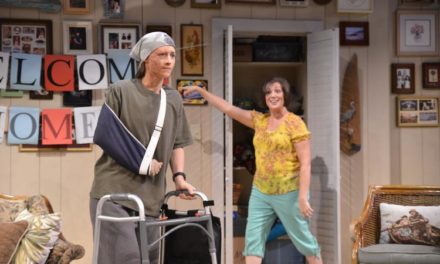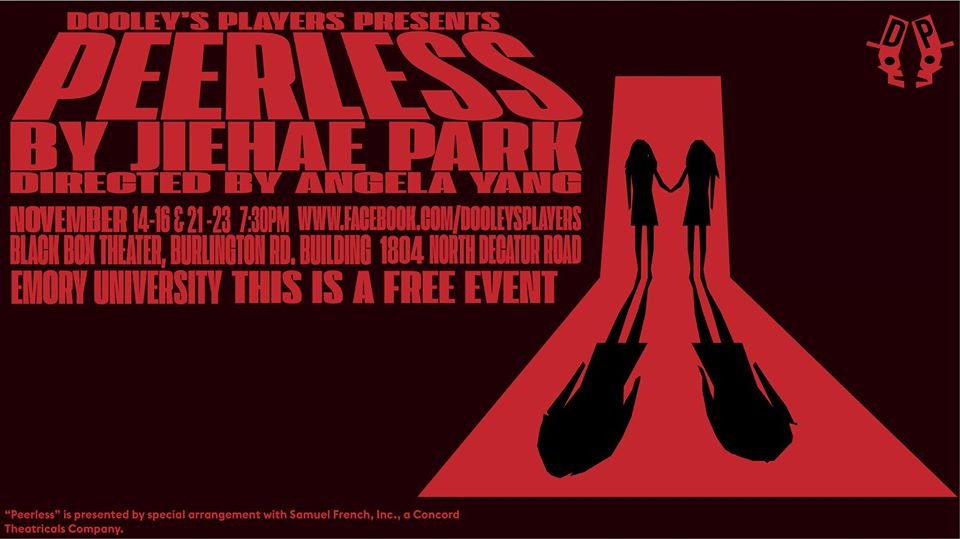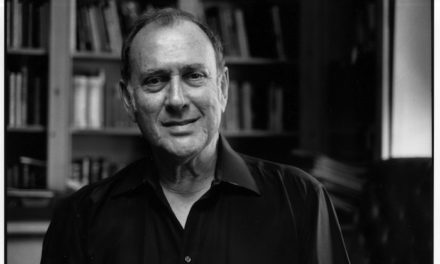
Courtesy of Heather Lu/Senior Staff Writer
Scattered across different majors and unique involvements, Emory Arts leaders put in tireless and often thankless hours toward the betterment of the campus. Though these leaders cover sweeping territory, the passion for creating unites them. From playwriting to sculpture to poetry, Emory Arts has continued to thrive in spite of the COVID-19 pandemic.
While Emory University faculty and arts initiatives bankroll and provide institutional support for Emory Arts students, it is ultimately the students who provide the zeal.
Increasing visibility
President of Emory Musician’s Network Zoe Stephens (25C) painted a picture of the lively growth for the current music scene at Emory. Her club is a campus-wide organization that seeks to connect musically-oriented undergraduates from all ranges of musical backgrounds. Despite her short time at Emory, Stephens has seen great strides in increasing visibility within Emory music.
“There has definitely been a push toward making the arts more visible on campus, especially in acknowledging and legitimizing art that takes place outside of departments and faculty,” Stephens said.
The Network also recently advocated and successfully secured a non-music-major practice space in the Schwartz Center for Performing Arts, according to Stephens. She added that the process was not easy or straightforward; the Network’s executive board had to repeatedly adapt and advocate for the necessity of a non-major rehearsal space. Their practice space was located first in the Media, Literature, and Arts Outreach theme house, later migrating to Harland Cinema as a quasi-rehearsal studio space and then finally moving to its current location.
“It’s is so cool because that is a permanent, physical example of the way that Emory is investing in the arts,” Stephens said. “Hopefully if we continue to be visible on campus, then they’re going to keep us in their future plans.”
Stephens also mentioned Emory Arts Project Coordinator Maggie Beker and Founder of Emory Composer’s Society Solomon Kim (24C) as influential advocates in securing this rehearsal space.
Kim, who is also a member of TEDxEmory and Stipe Fellows, added that the effects of the COVID-19 pandemic destabilized many traditional arts support that had previously uplifted Emory creators. This transition time through the pandemic has proven to be challenging and oftentimes slow. Despite Kim’s overall positive experience within Emory Arts, he does sympathize with the typical Emory Arts student.
“As a leader in these initiatives, I have felt supported by Emory Arts staff, but I think it is hard for your everyday Emory musicians to feel supported when students rotate in and out every four years,” Kim said. “There’s a conflict between the timeline that it takes to build things and the urgency that people feel.”
The frustrating prospect of building communities that will outlive their founders seems to be a common theme across different artistic communities. Willa Barnett (23C), artistic director of Dooley’s Players, Emory’s non-musical student theater group, shared a similar experience within her organization.
“COVID happened, and it wiped theater in some ways off the map because how do you perform events that are contingent upon being live and being in spaces and having an audience?” Barnett said. “Student theater specifically lost a lot of ground and a lot of numbers and a lot of traction that it previously held on campus.”
Emory theater has experienced ebbs and flows after the pandemic, notably in its dichotomy between student-led theater initiatives and faculty-dominated Theater Emory’s productions, according to Barnett. Since its de-unionization in 2022, the department’s relationship with student-led projects has evolved dramatically. Student theater, which had historically been able to fill the need of more “experimental” student-led theater initiatives, gradually became the priority of Theater Emory after its de-unionization.
“There’s been a little bit of growing pains, and hopefully out of that comes a lot of flourishing student theater that is responsive to the needs of students,” Barnett said.
Student filmmakers are also finding new and impressive ways to capture their surroundings, though not without setbacks. President of Emory ETV Film Club Isaac Gazmararian (23C) expressed his reservations about the quality and quantity of film courses granted at Emory.
“I don’t think they’re nearly enough of [film production courses] or nearly enough production faculty to provide that everyday film person who’s interested in production with that experience,” Gazmararian said.
Currently, the film and media department offers 11 classes related to film production, including FILM 255: Film, Media, and Social Change and FILM 378RW: Screenwriting. Events like the annual student-led Campus Movie Fest encourage students in FILM 107: Intro to Digital Video and throughout the Film and Media Department to collaborate with peers and showcase their talent.
Thirty-four students graduated with a Bachelor of Arts in Film and Media from Emory this year, according to Senior Undergraduate Degree Program Coordinator Clare Sterling.
“Emory isn’t a film school, but yet there are still all these little pockets of really talented individuals with a real passion,” said Gazmararian, who has worked on 15 of his own films during his time at Emory.
Institutional advocates: What’s next
Elizabeth Cohen (23B), President of The Gathering a Cappella, Emory’s women-plus a cappella group, and co-Captain of Persuasion Dance Crew, Emory’s female-identifying hip-hop crew, introduced the thriving dance community at Emory. She noted that the dance world has been able to bounce back swiftly after the COVID-19 pandemic, arguably quicker than the a cappella group, which lacked immediate institutional support.
“Our dance community at Emory is extremely strong, especially through the dance major and Emory Dance Company world,” Cohen said.
Co-Captain of Persuasion Dance Crew Marisa Powell (23B) highlighted a similar tight-knit dance community on campus, specifically within the team.
“Persuasion meshes very well two aspects of Emory’s community: the dance and more cultural community,” Powell said. “Overall, it creates this really strong community of people who support each other and want to have fun and are creative.”
Powell also recalled Persuasion Dance Crew’s Moonlight Gala collaboration with Emory’s Asian Student Organization back in January as an example of an impactful cross-cultural arts event programming.
Despite the prospering dance component of Emory Arts, the funding and politics behind receiving them is still a concern for student organizations.
“From my perspective, Emory arts funding is definitely still not high enough for arts groups, nor is it distributed evenly,” Cohen said. “The hoops you have to jump through to get official funding from the school just don’t make sense.”
Powell expressed similar qualms, but said these mostly concerned visibility issues for campus art.
“Some people on campus just aren’t aware of the arts, specifically dance, and the great performances they put on,” Powell said.
She also highlighted the difficulty and complexity of chartering Persuasion itself.
“It could be better, and it has potential, because the people in the arts department are so passionate, and they deserve to have more funding,” Powell said.
Kennedy Kerr (23C), president of AHANA Dance — recently rebranded as Emory Student Dance Network — and member of Emory Dance Company, described AHANA Dance as a welcoming community.
“It’s a creative outlet for a lot of people that also ends up making something really cool and really professional-looking and something that we can share with the Emory community,” Kerr said.
A thriving a cappella scene
Across campus from the Schwartz Center for Performing Arts, the Emory Student Center’s steps are another commonly used performance space. Students can find a cappella groups at the base of these steps for the historic First Friday at the start of every month. It is arguably the best place to get the pulse on the state of campus vocals. President of No Strings Attached, Peter Petrakis (24B), said that some of his “favorite memories at Emory” include these performances.
Petrakis added that the once-rivalrous community is now a united one and that they all root for each other at the annual International Championship of Collegiate A Cappella.
“Especially this year, it’s becoming increasingly clear that there is a very strong sense of community among the a cappella groups,” Petrakis said.
ChaiTunes A Cappella, Emory’s only coed a cappella group focused on Jewish culture, can also be found at First Friday, notably singing vocal renditions of new and old Jewish and Yiddish songs.
“Being a part of an a cappella group, as a freshman who was nervous coming in about finding community and making friends, was huge because it gave me structure and it gave me a group of people I was going to see twice a week,” ChaiTunes President Becca Frischling (23C) said.
Frischling added that the ESC steps location of First Friday is advantageous.
“One of the things that makes it so special is that it’s very casual and very friendly,” Frischling said. “It’s not a competition environment, it’s really more of a showcase where we want to hear everyone and see what they’ve been working on.”
First Friday also proved to be a pivotal moment for Oxappella, Oxford College’s premier gender-inclusive a cappella group.
Emily Zhou (23Ox), co-President of Oxappella alongside Michael Dehn (23Ox), expressed that the Oxford community has become more involved with the Atlanta campus’ arts initiatives in recent years, commuting to the University’s Atlanta campus to perform at First Fridays.
“That was the first time Oxappella got to perform there in many many years, so that was really exciting,” Zhou said. “We’re very optimistic about future connections between Atlanta and Oxford.”
Damisi Akinpelu (24C), Incoming President of Dooley Noted, Emory’s gender-inclusive a cappella group, expressed a similar sense of community. He recalled the sheer power that music has had on his life, dating back to his piano playing that has spanned over a decade. For Akinpelu, being able to make music with other people has made his artistic journey worthwhile.
“It is a form of community because you have a shared interest in music,” Akinpelu said. “It often provides a space where you can learn from others and also a space where you can talk about music-related things that someone who maybe isn’t as interested in music may not be able to relate to as well.”
Swara Founder and College Council President Neha Murthy (24C) said that her club was born out of her desire to start a South Asian classical music club at Emory, as well as feeling excluded by other Asian a cappella groups.
“There needs to be more resources provided actively from Emory Arts or the music department, as a department shouldn’t just be sustaining and supporting music majors and minors,” Murthy said. “They should be supporting all students who are interested in music.”
Growth in art history and architecture
Two other underexplored pockets of Emory Arts are its thriving art history and architecture.
Kitty Graham (24C), who is the president of Emory Art History Club, The Architecture Club and recently the Emory chapter of American Institute of Architecture Students, said that the Architectural Studies Minor has continually impressed her.
Graham’s time at Emory also seemed like something preordained, especially growing up close to the Atlanta campus in her childhood. She remembered visiting the Michael C. Carlos Museum and learning about Emory’s art history program long before she thought about college applications.
“It’s fulfilled everything — all those childhood memories I have from the museum and everything,” Graham said. “It’s been such a special thing, especially taking art history programs and then walking over to the museum and seeing the things that you’re learning about.”
Graham said she is confident about the future of arts at Emory.
“I feel like it’s growing pretty rapidly, especially within architecture,” Graham said. “I feel really good about the future in coming years because I think people are really seeing how art and architecture are important to everything else that they’re studying.”
Communal support in creative writing
Students find this same passion in Emory’s creative writing world. The University has consistently ranked highly for their robust creative writing program and frequent guest speakers. Most recently, the program hosted U.S. Poet Laureate Ada Limón in February.
One active contributor to Emory’s creative writing program is Raegan Allen (23C). Allen is the editor-in-chief of Alloy, Emory undergraduate literary magazine, as well as head blog editor of the pulse of emory, another student arts group.
“There [are] several places on campus where you can publish student work if you so choose, which is amazing,” she said.
Allen also spotlighted the pulse of Emory’s annual Anthology and compilations published by the student-run literary publication, lullwater review. She said that experience is different from other academic departments that have reputations for being “competitive.”
“Certain parts of Emory have a reputation for being very competitive in a way that is not necessarily the most productive or positive, I would say, but I don’t think the creative writing department is like that,” Allen said. “We all build each other up and are genuinely so excited whenever someone else gets published in a major publication or when someone gets into a really great MFA program.”
Although not exhaustive, these students represent the thriving nature of Emory’s art scene. From a cappella groups to Indian classical music to student-led theater groups, Emory undergraduates spend considerable time toward the betterment of their craft and organizations.
Ari Segal (he/him/his) (25C) is from Boca Raton, Florida, and majoring in Philosophy, Politics and Law (PPL). He is the Arts and Entertainment Editor at the Wheel. Outside of the Wheel, he is involved with the Emory Law School, Emory Conversation Project and the SPARK Mentorship Program. If you run into Ari, he is probably talking about music, listening to music or playing music on the guitar.







